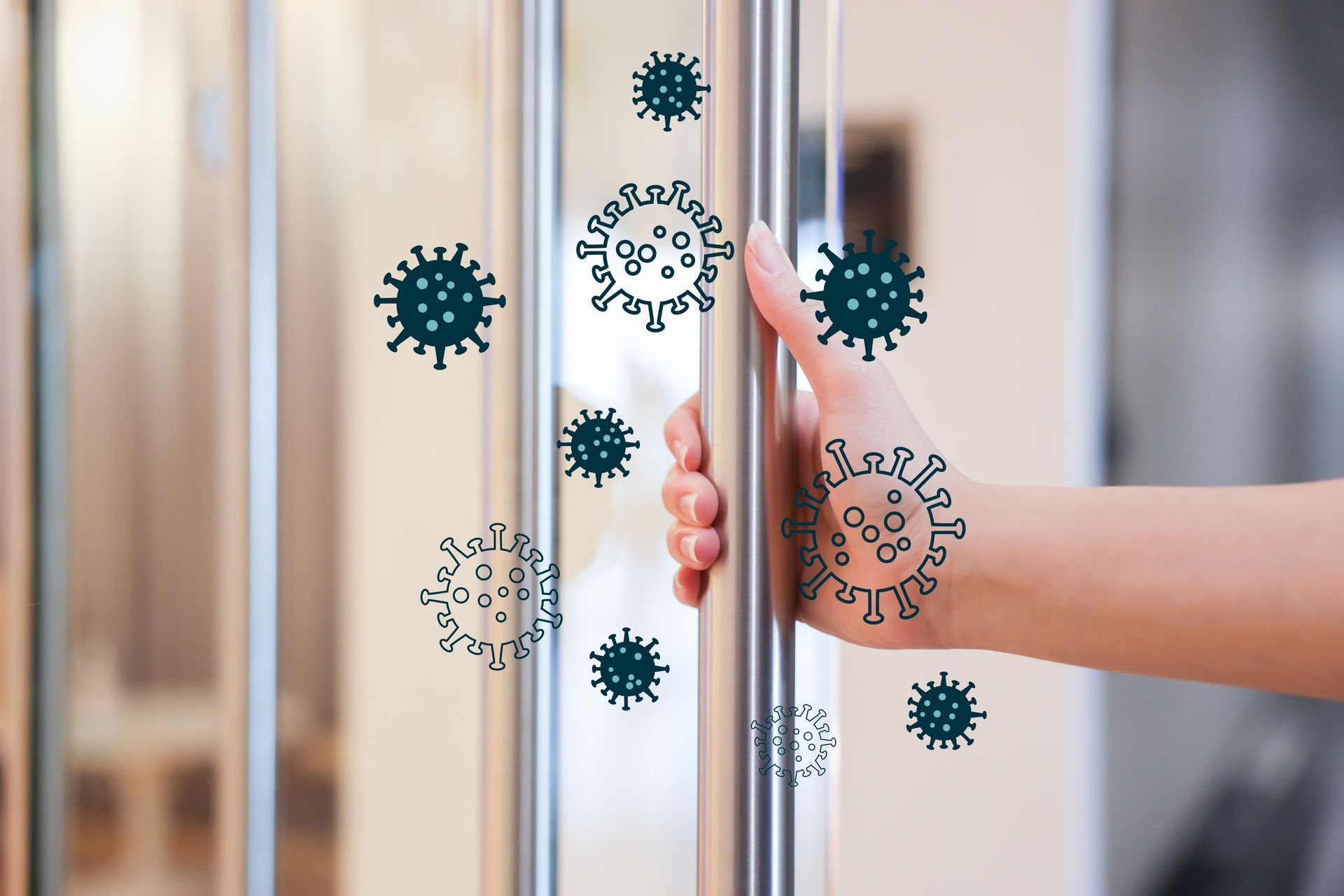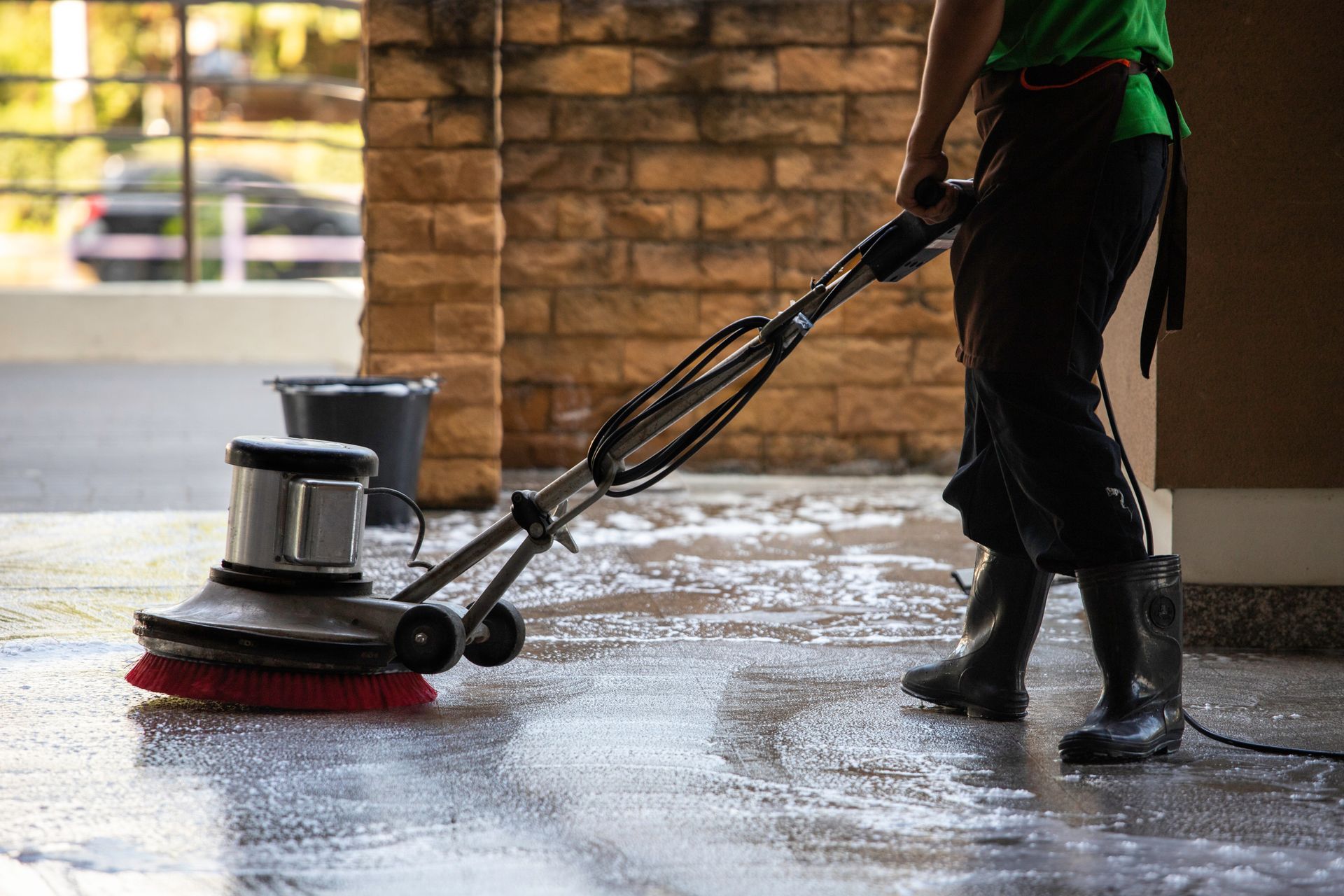How Many Germs Live on High-Touch Point Surfaces? (And What Actually Gets Rid of Them)

In any workplace or commercial building, high-touch point surfaces can accumulate hundreds or even thousands of germs over the course of a single workday. These include doorknobs, light switches, elevator buttons, keyboards, bathroom faucets, and breakroom handles. While they may not look dirty, these surfaces can harbor thousands of bacteria and viruses, quietly increasing the risk of illness throughout your facility.
How Many Germs Are We Talking About?
It might surprise you how densely populated high-touch surfaces really are when it comes to bacteria and viruses. Here are some estimates based on published data from hygiene studies:
- Office keyboards: Around 3,000 to 5,000 bacteria per square inch
- Elevator buttons: Can contain more than 40 times the number of germs found on a public toilet seat
- Door handles: Thousands of colony-forming units (CFUs), including strains like staph and E. coli
- Shared kitchen sponges and faucets: Often test positive for over 10,000 CFUs per square inch
Many of these germs are not necessarily dangerous, but some are known to cause colds, the flu, stomach illnesses, and even more serious infections. The real concern is how long dangerous germs can survive on high-touch point surfaces and how easily they can be transferred between people.
How Long Germs Survive on Surfaces
The survival time of microbes varies based on surface type, temperature, and humidity. Here are some examples of how long different pathogens can live on high-touch surfaces:
- Influenza virus (flu): Can survive on hard surfaces like stainless steel and plastic for up to 48 hours
- Cold viruses (rhinovirus): Typically last about 24 hours on similar surfaces
- SARS-CoV-2 (coronavirus): May persist for up to 72 hours on hard, nonporous surfaces like plastic and metal
- Norovirus: Can remain infectious on surfaces for several days or even weeks
- Bacteria like MRSA or E. coli: Often live for hours or days, depending on the environment
Without regular cleaning, these germs have plenty of time to spread between employees and customers who touch the same surfaces throughout the day.
Cleaning Methods: What Actually Works?
Not all cleaning methods are created equal. A surface may look clean but still harbor infectious microbes if the right tools or products are not used. Here's how different methods compare:
1. Dry or Moist Paper Towels
Simply wiping a surface with a dry or even a damp paper towel may remove some visible dirt or debris, but it does very little to reduce the microbial load. This method is not considered effective at disinfecting.
2. General Cleaning Sprays
Basic cleaning sprays may lift dirt and some germs from surfaces, but unless they are labeled as disinfectants, they do not kill bacteria or viruses. These are useful for regular maintenance, but not ideal for infection control.
3. Disinfecting Wipes
EPA-registered disinfecting wipes are designed to kill a broad spectrum of microbes. However, they must be used correctly to be effective. This includes following the “dwell time” or the amount of time the surface must remain wet for the disinfectant to work, usually 30 seconds to 4 minutes.
4. Commercial-Grade Cleaning Solutions
Professional cleaning companies use powerful disinfectants and have the training to apply them properly. Electrostatic sprayers, for example, allow for even coverage on large surface areas and can be effective for sanitizing everything from doorknobs to desk phones.
The Hidden Cost of Ignoring Germ Control
Failing to properly disinfect high-touch surfaces doesn't just increase the risk of spreading illness. It can also lead to more frequent absenteeism, lower productivity, and even create liability issues if a preventable outbreak occurs on your property.
In shared environments like offices, retail stores, healthcare facilities, and schools, one infected surface can cause a domino effect of transmission. In some industries, failing to maintain sanitary standards can even lead to regulatory fines or lost business.
Protect Your Facility With Our Building Services in the Greater Phoenix Area
At ProEthic Building Services, we know that cleanliness goes far beyond appearances. Our team focuses on high-touch point sanitation as a critical part of your facility’s overall health and safety. We use commercial-grade disinfectants, up-to-date protocols, and targeted strategies that match the unique needs of your business.
To schedule your building services or request an estimate, contact us here on our website or give us a call at (480) 725-8912.



